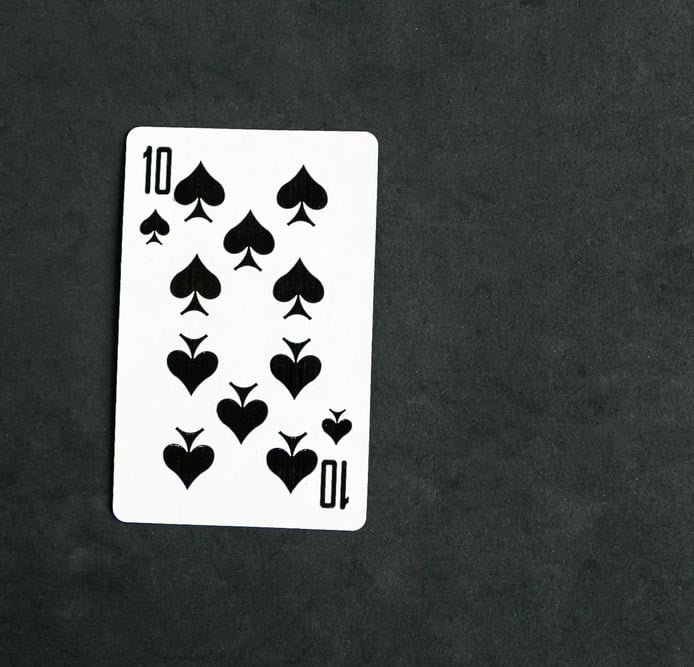
The rule of thumb when playing blackjack is that you should never split a pair of tens. This makes sense because your chances of winning when you stand pat on your ten pair are a whopping 83%. However, if you split your pair of 10s, your odds of winning reduce to 63%. Besides, you are not only more likely to win, but you can also win more money when you stay with your pair of 10s.
Defining a Ten-Value Card
A ten-card or 10-value card in blackjack is any card worth 10 points. It could be the numeric card 10 or any face card (King, Queen, or Jack). Therefore, a pair of tens could be made up of any ten-value cards like:
- 10-10
- J-10
- J-J
- Q-K
- K-10
- J-Q
How to Play a Pair of Tens
You can make any of the two viable moves with a pair of tens. You can stand or split the pair of 10s. If you don’t split your pair and stand pat with the tens, you will have a 20-value hand, only 1 point shy of the magic number, 21.
If you decide to split your pair of tens, you will create two separate hands, each worth a 10.
You can then play the two hands individually by hitting to draw additional cards. Each hand could create a blackjack (Ace-10), end up being a hard 12 (10-2), or any hand in between. Everything goes once you have split your tens.
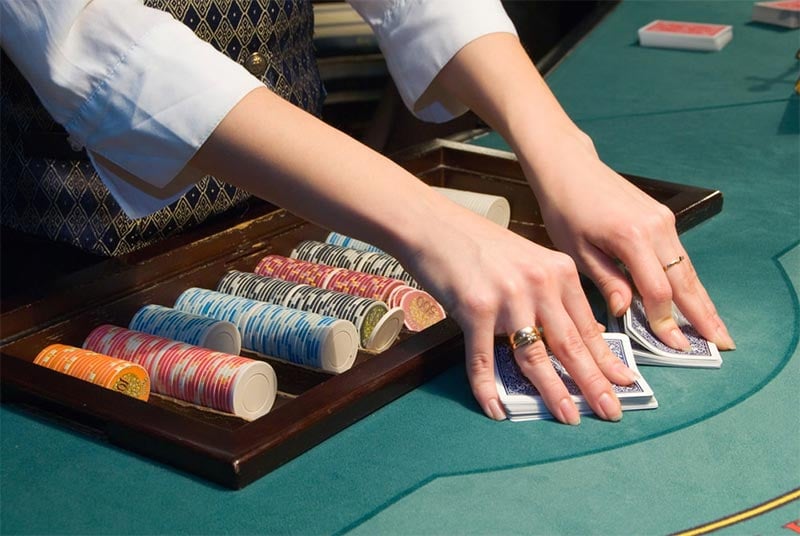
What Happens When You Split a Pair of Tens?
Statistically speaking, you will win 63% of the time if you split a pair of tens against the dealer’s upcard of 5. Your chances of losing after splitting a ten-pair are 37%. The gain if you go the splitting route is around 26%.
Meanwhile, if you decide to split a pair of 10s and the dealer has a 6, your chances of winning are 64%, while the loss probability is 36%. In this case, the expected value or net gain is 28%.
You are the overwhelming favorite and poised to win decent money when you choose to split your pair of tens, whether the dealer is showing a 5 or a 6 up-card.
When you work it out you find you stand to win an average of $52 for every $100 wagered when you split a pair of tens against a dealer card of 5. When you face off a dealer’s up-card of 6, you can expect a profit of $56 for every $100 bet after splitting tens.
However you look at it, the expected value when you split a pair of 10s is solid against the dealer’s 5 or 6. However, before you split those ten-cards, let’s take a look at another viable option – to stand pat on your pair for a 20.
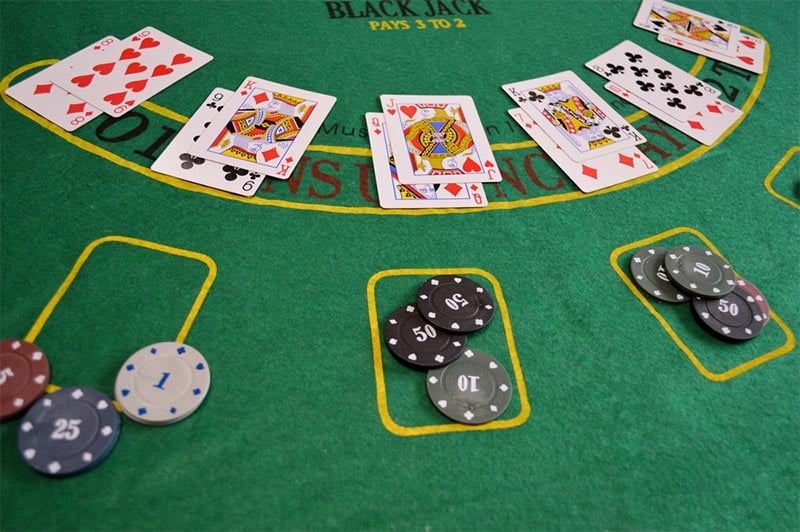
What Happens When You Stand on a Pair of 10s?
As you may already know, you will create a pat 20 if you stay with your pair of tens. A 20 is regarded as an excellent hand in blackjack. In fact, you can expect to win 84% of the time and lose only 16% when you stand on pat 20 against the dealer’s 5. Your expected value is a staggering 68%.
When facing a dealer with a 6 up-card, your chances of winning with a pair of tens is even higher, at 85%. You are going to lose only 15% of the time when you stand on a ten pair against a six up-card for the dealer. The expected value for this scenario is a whopping 70%.
Your expected win is $70 for every $100 bet when you stand on a ten pair against the dealer’s 6. The two examples show that standing on a pair of 10s will give you $14 more profit than splitting your tens.
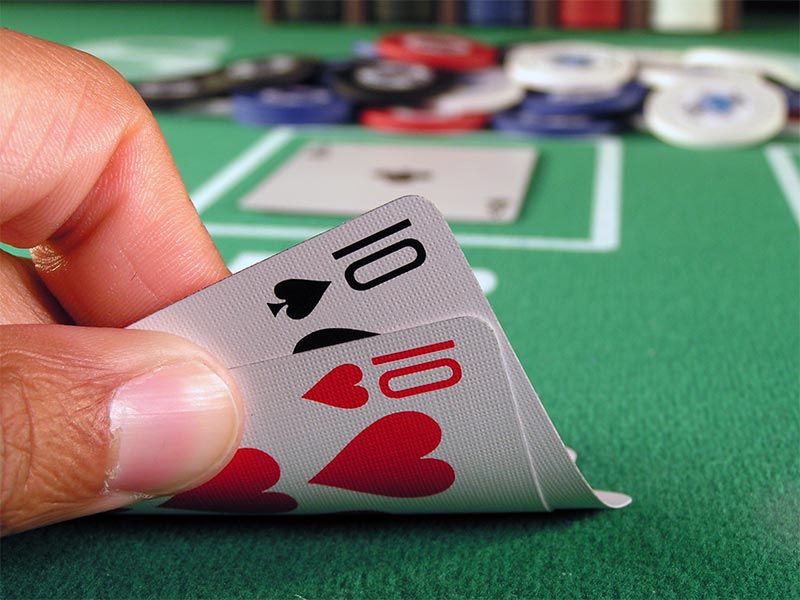
Why Blackjack Players Would Re-split Tens
If you are sitting at a blackjack table, whether at a land-based or online casino, that allows you to re-split, you can re-split your pairs up to 3-4 times. If you were to split your tens and receive another ten to either individual hand, you’d be able to split again, creating 3 or 4 separate hands, each beginning with a ten.
When to Split 10s – Blackjack tournament players plus card counters
Splitting 10s should be considered in two situations. The first happens when there is a surplus of tens in the shoe, increasing the likelihood that you will draw a 10-value card to each split ten, providing you with two hands of 20.
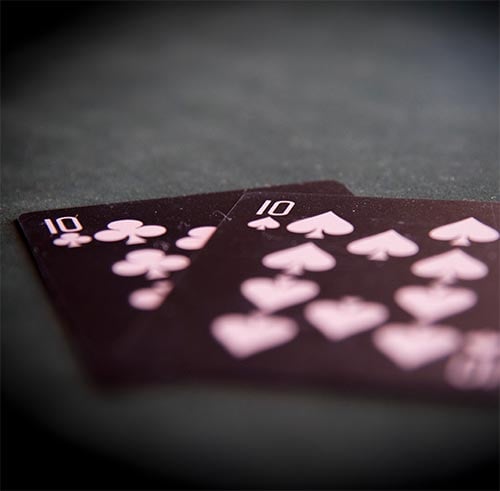
Card counting is the only technique to determine if the cards remaining in the shoe are heavy on tens. For instance, card counters with a solid knowledge of classic Hi-Lo card-counting technique will divide 10s vs. a dealer 5 upcard when the true count is higher than +5.
Whereas the latter move is the right mathematical strategy, splitting 10s in a land-based casino raises the possibility that you are a card counter. As a result, splitting 10s in a single session is not a good idea, even if it seems to be the right move.
The other occasion when splitting tens may be regarded as a good basic strategy is in the last hand of a blackjack tournament, where the aim is to have more chips than your fellow table players after playing a certain number of hands. For example, if it’s the final chip count and winning the hand with the chips you’ve bet will still not be enough to overtake the leader, spending twice as much, then a player should consider splitting the tens.
Why is it bad to split 10?
Splitting a pair of 10s is a bad strategy because you will win more money when you stand. Staying pat with your 10 pair has an 85% chance of winning against the 64% probability of landing a winning hand by splitting the tens. That’s when the dealer shows a 6.
Should you always double down on 10?
Yes, you should always double down on a 10, except when the dealer’s up-card is a ten or an ace. The same strategy applies whether the dealer has to stand on soft 17 or hit on soft 17. So, it would help if you always double down on such a hand against the dealer’s 2 through 9.
